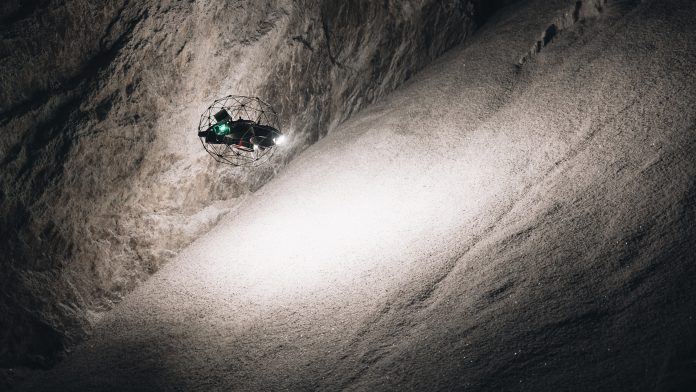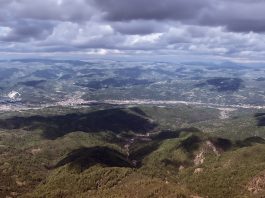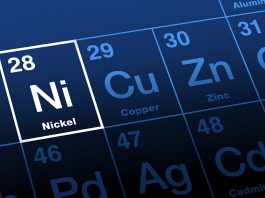Mining companies are turning to UAS inspection technology, like the Elios 3, to prevent humans from being exposed to dangerous situations.
Mines around the world vary in size, material, and age, but they all have the potential to pose risks for the humans who work in them. Thankfully, technological advancements are enhancing mining safety for the people who work there, with drones emerging as a game changer, particularly in confined or inaccessible spaces.
The Elios 3, Flyability’s specialised remote visual inspection tool, revolutionises the safety and efficiency of inspections while decreasing downtime. The Elios 3 is a very flexible tool, and its applications in mining include drilling and blast assessment, exploring old workings, volume calculations and stockpile tracking, mapping, and more.
Features and capabilities of the Elios 3
The Elios 3 is a specialised drone created to access and collect data in the most challenging environments. It has a collision-tolerant cage along with special flight monitoring settings that help it withstand and correct impact in confined spaces.
The drone also carries a unique set of capabilities in that it can simultaneously gather visual and LiDAR data.
The drone’s LiDAR data, particularly with the Surveying Payload, is accurate to one centimetre. The Ouster Rev 7 sensor ensures high-quality results, gathering 1.3 million points per second with superior photon sensitivity, empowering surveyors with reliable and precise data for various projects.
Ensuring safety in mining
Traditionally, mining has been a hazardous occupation where workers must enter dangerous or unstable environments on a regular basis. They encounter heat exposure, unpredictable air movement, and unstable structures.
To mitigate these risks, mining companies can use drones to do the initial inspection and gather data to assess possible risk.
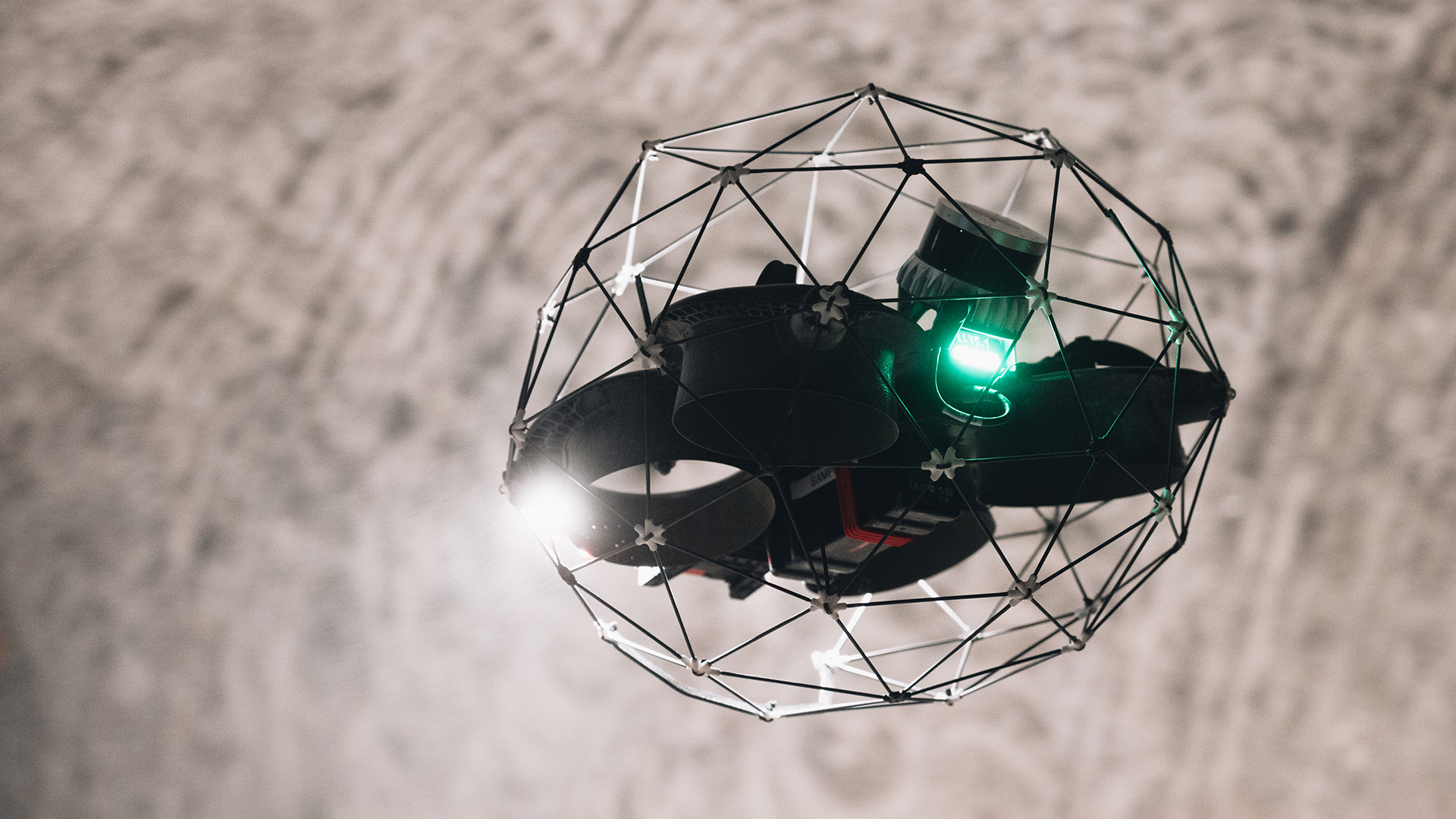
The Elios 3 aids in determining safe entry and conducting regular surveys of different environments over time.
It can even be used as an emergency response, thanks to fast deployment, and its ability to gather visual and LiDAR data for locations beyond visual line-of-sight.
Access to unreachable areas
Each mine presents unique challenges, and drones can provide unparalleled access to areas previously unreachable. This could include reaching orepass hangups or fall-of-ground locations.
Drones present an ideal tool for accessing places that were previously unreachable. They can fly and work at height, while specialised drones can also enter confined spaces to gather information and conduct surveys. This is particularly useful when working in potentially hazardous environments, such as surveying old workings.
This improved access to an area with a drone can unlock new information. Drones can be flown through ventilation systems to check the condition of pipes and plan maintenance, or similarly down blocked pipes and tunnels that cannot be safely reached by people, traditional laser scanners, or cable-mounted cameras.
The Elios 3 drone can fly beyond the line of visual sight, and the pilot can rely on the LiDAR live map and video feed to guide the drone into tricky locations measuring as small as 50x50cm. This ability to reach new areas makes it a valuable tool for improving access to more of a mine with greater ease and safety.
Data quality
The LiDAR data gathered with a drone can be used for various projects, from stockpile tracking to convergence monitoring or inspecting old workings.
The LiDAR data gathered with the Elios 3’s specialised Surveying Payload is accurate to one centimetre using the Ouster Rev 7 sensor, which has ten times higher photon sensitivity than the Elios 3’s standard LiDAR sensor.
The Rev 7 provides incredibly high-quality results in shorter flight times, empowering surveyors to analyse their results with confidence in the data accuracy.
Efficiency and decision making
The quick deployment, high-quality data, and flexible operation make the Elios 3 a highly efficient solution. There is no need to set up scaffolding and PPE or implement extended shutdowns. A ten-minute flight can cover an ore pass that traditionally takes hours or even days.
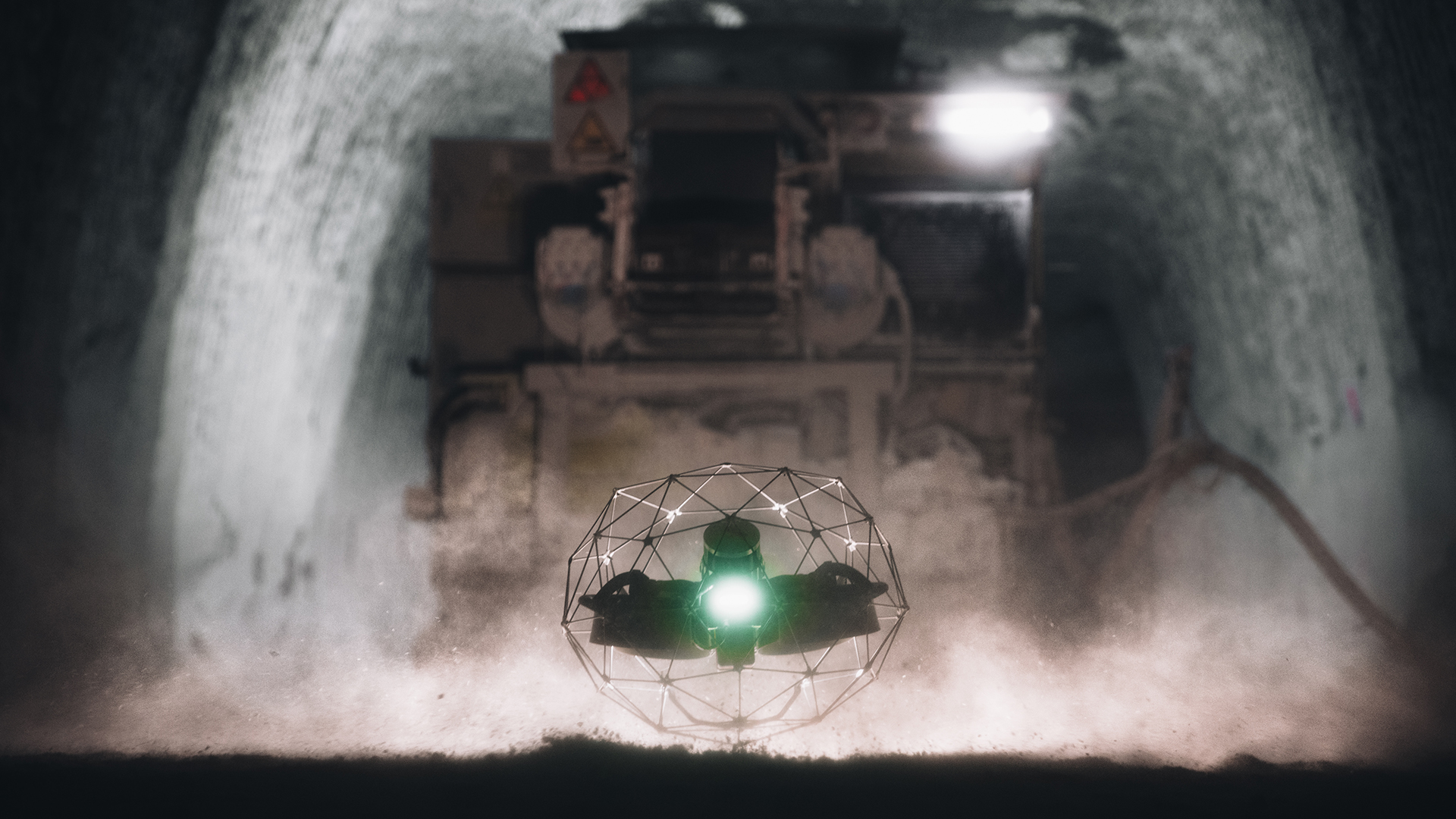
One customer praised the Elios 3, stating: “To get to some of the places we send the drone, you’re pulling a $2m loader off its job, strapping a scanner onto it and sending it somewhere remotely. This becomes a 15-minute job with Elios.”
About the Elios 3
Elios 3 is the outcome of four years of extensive engineering work. The integration of FlyAwareTM – a proprietary SLAM engine that works in combination with a brand-new LiDAR payload – enables significant upgrades in terms of performance, versatility, and stability.
Elios 3 is designed to be used by anyone on your team, indoors, in complete darkness, and no matter the dust.
Its SLAM-based stabilisation algorithm, powered by the fusion of three VIO cameras and the LiDAR, catches the tiniest unpredictable movements of the drone and instructs the flight controller to compensate for it, allowing for the drone to float in the air still as a stone, even in the toughest conditions.
This stability and other ease-of-use features make the Elios 3 incredibly easy to operate, so pilots from all skill levels will succeed at performing complex missions with almost training.
The quick hits
• Accessibility: Excels in GPS-deprived, dusty, and dark
environments reaching small, inaccessible areas that
traditional tools and other UAVs can’t access.
• Safety: Enables scanning and inspection of indoor
assets before human entry.
• Data quality: Capture centimetre-accurate scans, with
4k videos and 12 MP images
• Efficiency: Inspect your assets in just a fraction of the
time compared to traditional methods.
The Elios 3: Bringing higher quality data results to mines globally
The Elios 3 stands out as a key tool for bringing safer, higher quality, and more efficient data collection and results to mines worldwide.
Tailored for complex environments, its modular design ensures ongoing capabilities as new payloads unlock additional applications.
Witness the Elios 3 in action by contacting our team to organise a demo at a site near you.
Please note, this article will also appear in the seventeenth edition of our quarterly publication.

